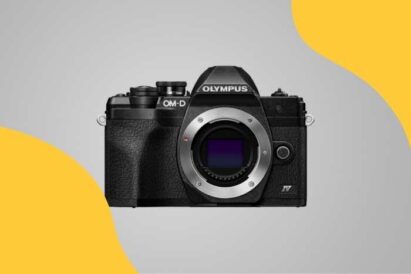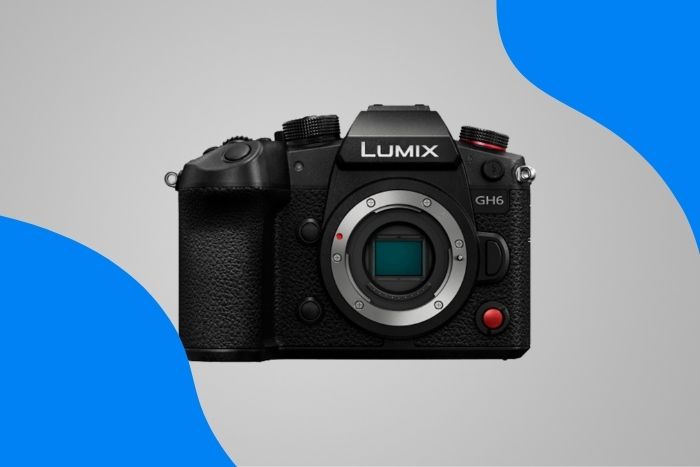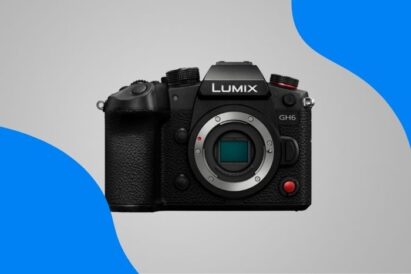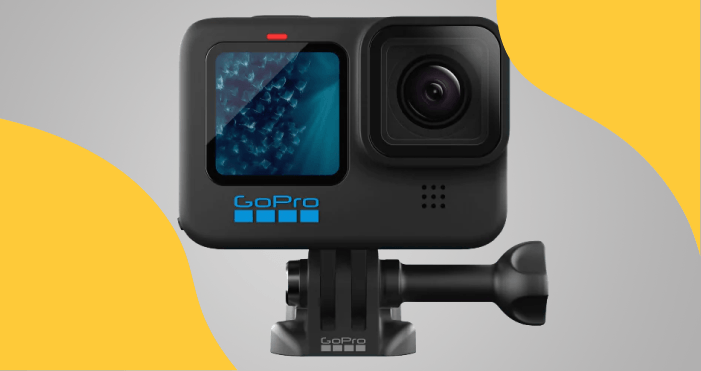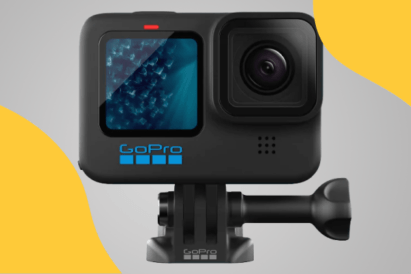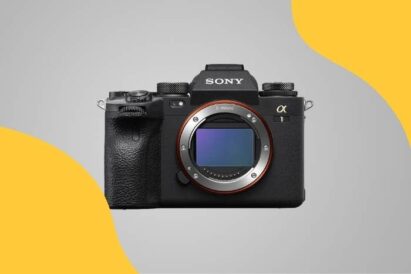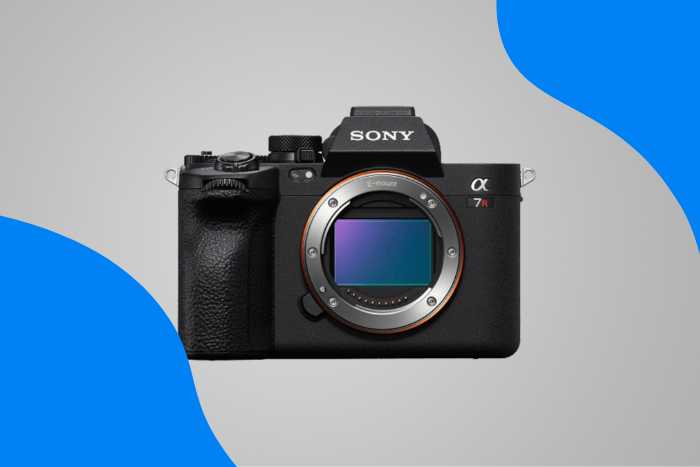As a wildlife photographer, I’ve owned Nikon DSLR and Sony mirrorless cameras… not Canon ones. However, the requirements for sports and wildlife are similar. And I have experience with mirrorless cameras.
I’ve also photographed sports events such as rugby matches. So I understand some of the issues in picking the best Canon camera for sports photography. The main criteria for choosing a sports camera are the following:
- Shutter speed (or “time value” to Canon users!)
- Frame rate
- Buffer size
- Autofocus
Mirrorless models offer all those camera features in spades. And the Canon R3 and the R5 are neck-and-neck. But the R3 comes out on top.
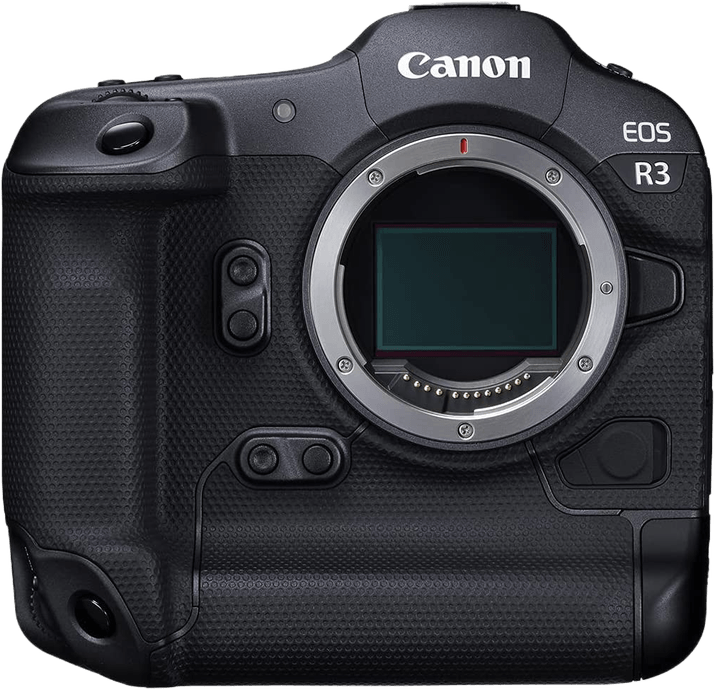
Canon EOS R3
The R5 is almost the complete package. It’s on par with the Sony a1 and the Nikon Z9. However, its RAW frame rate is a little on the low side.
The R3 has a faster shutter speed, better frame rate, vehicle tracking, and Eye Control AF (autofocus). Plus, it has made gains in dynamic range, low-light performance, and ISO limit. The only problem is that its sensor is too small… But which one is the best camera for you?
What is the Best Canon Camera to Buy for Sports Photography?
Here’s a summary of all the main contenders when choosing a digital camera for sports photography.

- A high frame rate of 30 fps
- Less noise with BSI stacked sensor
- 8 stops of image stabilization
- 6K / 60p RAW video
- 620-shot battery life
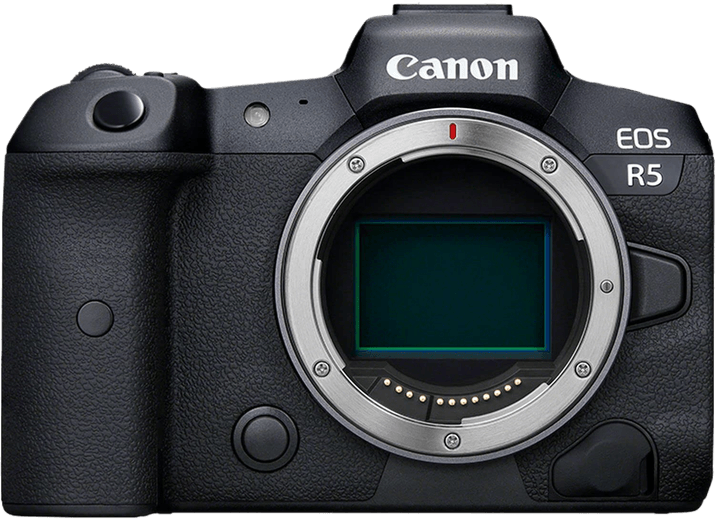
- Large 45 MP sensor
- High frame rate of 20 fps
- In-Body Image Stabilization (IBIS)
- Body, face, eye, and animal tracking
- 8K/30p Ultra HD video
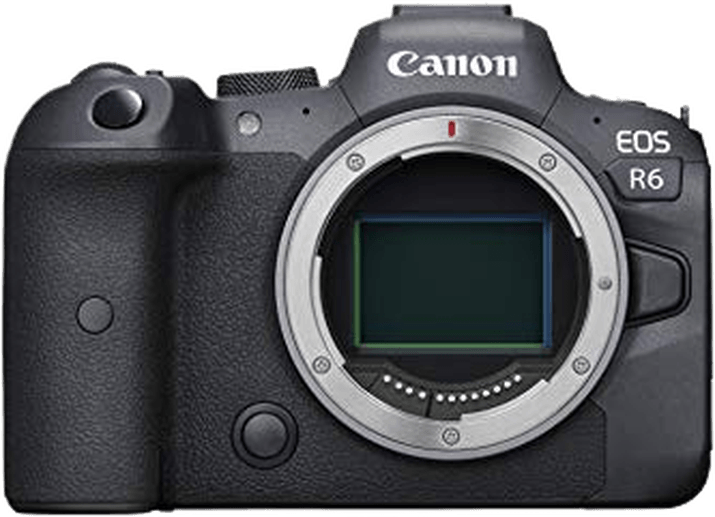
- Relatively affordable
- Excellent in-body image stabilization
- Compact and ergonomic design
- Fantastic expandable ISO range
- Rapid burst speeds
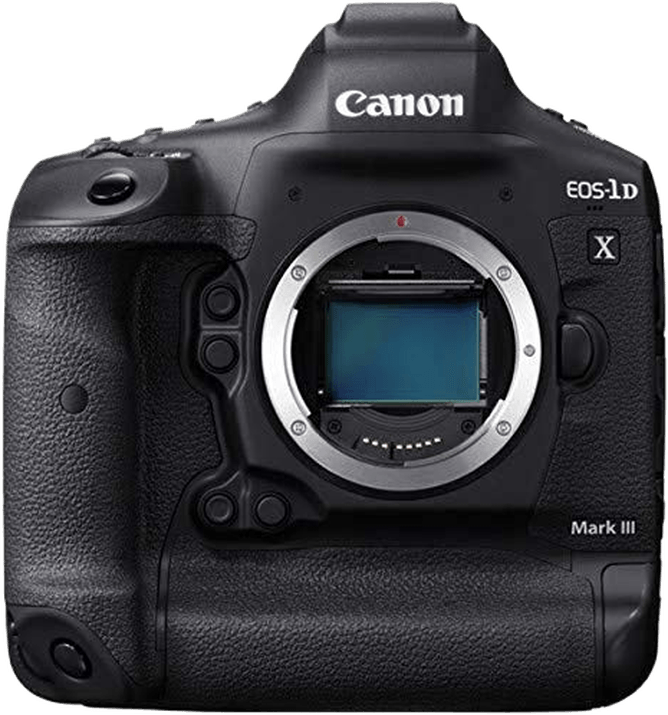
- Excellent low-light capabilities
- Dual Pixel AF and AI detection
- Fantastic buffer for continuous shots
- High frame rate for video recording
- Great battery life
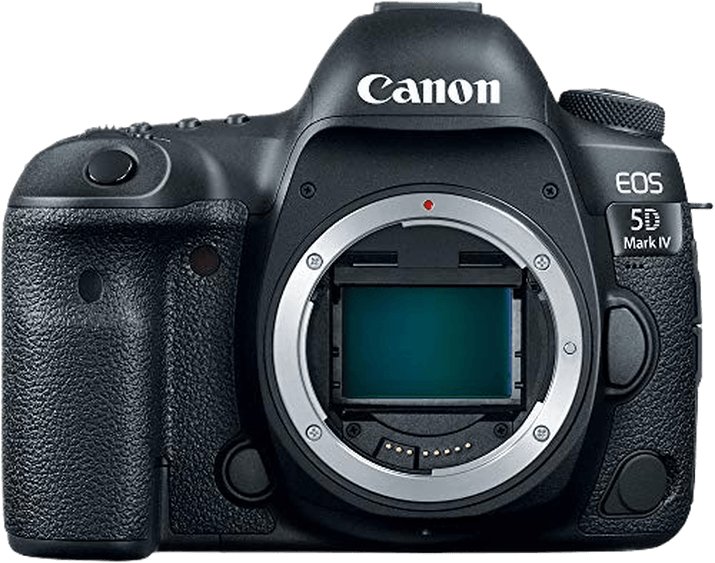
- Quality sensor produces detailed and vibrant images even at high ISOs
- Dual Pixel AF with eye detection
- User-friendly touch-to-focus screen
- 900-shot battery life
- Cinema-quality (DCI) 4K video

- Excellent 32.5 MP APS-C sensor
- Dual Pixel AF with eye detection
- Decent frame rate of 10 fps
- Good, 1,300-shot battery life
- Live View and 4K/30p Ultra HD video
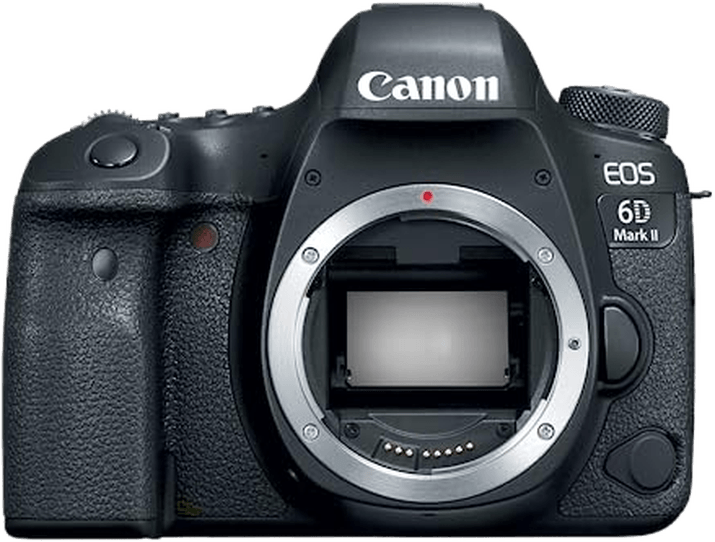
- Fantastic image quality
- Impressive 45-point AF system
- Built well and nice to handle
- Handy built-in Wi-Fi and GPS

- High resolution
- Anti-flicker mode
- Time-lapse photography
- Fine Detail Picture Control
- LCD graphic overlays in viewfinder
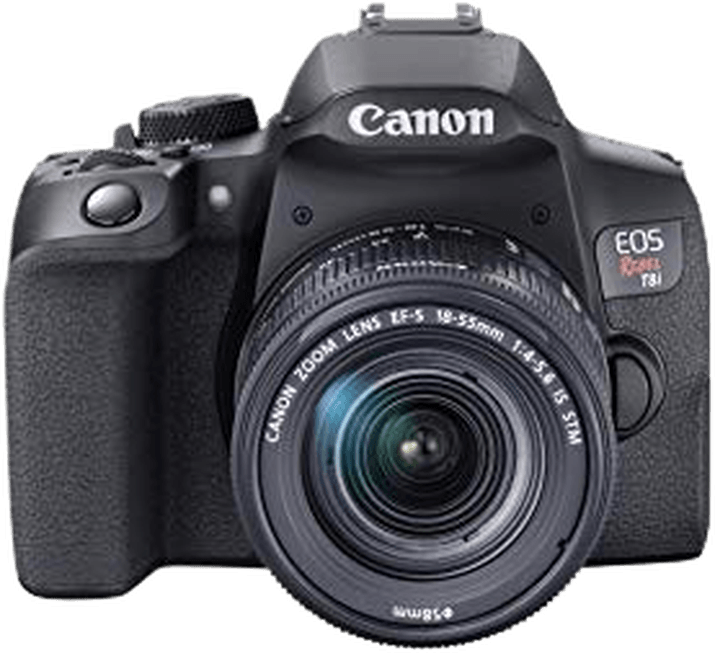
- Excellent image quality
- Face and eye-detection AF
- Great ISO range and low-light performance
- 4K/25p and Full HD/120p video
- Webcam functionality and remote shooting with smartphone
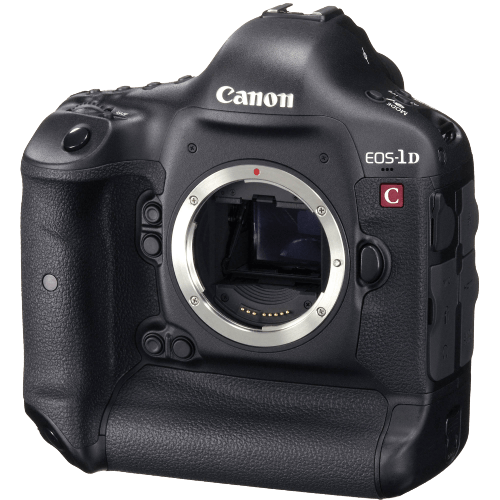
- A high frame rate
- A fast shutter speed
- Excellent 4K video
- An integrated grip
- Weather sealing
Best Canon Camera for Sports Photography (in Detail!)
Here’s a list of the top 10 Canon cameras for sports photography with their main features, pros and cons, and detailed write-ups.
1. Canon EOS R3

| Camera Type |
Camera Type
|
| Megapixels |
Megapixels
24 MP |
| Sensor Format |
Sensor Format
|
| Sensor Size |
Sensor Size
24 x 36 mm
|
| Frame Rate |
Frame Rate
30 fps |
| Autofocus Points |
Autofocus Points
1,053 |
- A high frame rate of 30 fps
- Less noise with BSI stacked sensor
- 8 stops of image stabilization
- 6K / 60p RAW video
- 620-shot battery life
- Relatively expensive
- Low-resolution for some photographers
- No 8K video
- Slowed frame rate with an SD card or low battery
Introduced in July 2020, the Canon EOS R3 is the complete mirrorless camera for sports photography… apart from the size of the sensor! Everything else is exceptional if you can get past the reduced image quality.
The Eye Control AF lets you choose your focus point by looking at it through the viewfinder! And the R3 passes every test. It has the fastest shutter speed, highest frame rate, the biggest buffer size, and the best autofocus capability.
The R3 was designed and built for sports and action photography. The secret is the combination of the stacked CMOS sensor and DIGIC X image processor.
The sensor’s rapid readout speed allows fast AF acquisition and an insanely high continuous shooting speed. It also helpfully minimizes rolling shutter effects. The image processor calculates processing, autofocus, and image stabilization as fast as possible.
The Canon R3 ticks all the right boxes:
- A broad ISO range
- Sensor-shift image stabilization
- Vari-angle screen
- Built-in Wi-Fi and GPS
- Weather sealing
If only it were a bit lighter!
2. Canon EOS R5

| Camera Type |
Camera Type
|
| Megapixels |
Megapixels
45 MP |
| Sensor Format |
Sensor Format
|
| Sensor Size |
Sensor Size
23.9 x 35.9 mm
|
| Frame Rate |
Frame Rate
20 fps |
| Autofocus Points |
Autofocus Points
1,053 |
- Large 45 MP sensor
- High frame rate of 20 fps
- In-Body Image Stabilization (IBIS)
- Body, face, eye, and animal tracking
- 8K/30p Ultra HD video
- Expensive
- Complicated autofocus setup
- Noise reduction applied to RAW files
- Hard to customize
- Overheats shooting video
Launched in July 2020, the Canon EOS R5 is an excellent full-frame mirrorless camera for sports photography. It offers high resolution, a fast frame rate, and a market-leading AF system. Plus, it has 8K and 4K video recording capabilities.
It provides all the features of the R6 and even some improvements. This includes the following:
- A larger sensor
- A larger LCD with a higher resolution
- A higher-resolution EVF
- A higher video bit rate
All of this is made possible by using CFexpress Type B memory cards.
These are the only minor problems:
- A lower ISO limit
- Fewer focus points
- Lower focus sensitivity
- A shorter battery life
And like the R3, it also weighs more than others.
Check out our full Canon R3 vs R5 comparison if you’re choosing between the two.
3. Canon EOS R6

| Camera Type |
Camera Type
|
| Megapixels |
Megapixels
20.1 MP |
| Sensor Format |
Sensor Format
|
| Sensor Size |
Sensor Size
23.9 x 35.9 mm
|
| Frame Rate |
Frame Rate
20 fps |
| Autofocus Points |
Autofocus Points
1,053 |
- Relatively affordable
- Excellent in-body image stabilization
- Compact and ergonomic design
- Fantastic expandable ISO range
- Rapid burst speeds
- Low megapixel count compared to closest competitors
- Interface is challenging to navigate
- EVF drains the battery
- Camera heats up shooting 4K / 60 fps
Now, we come to the last of Canon’s mirrorless full-frame cameras. Canon was a little late to the party. But they introduced a range of mirrorless bodies and lenses to match Sony and Nikon.
Launched in July 2020, the Canon EOS R6 has a small-ish sensor and a short battery life. However, it shows most of the typical mirrorless benefits:
- A high frame rate
- A high shutter speed
- Face detection
- Five-axis sensor-shift image stabilization
The R6 also has a blackout-free electronic viewfinder and an anti-dust shutter to protect the sensor when changing lenses. Plus, it can shoot 4K video with external ports for a microphone and headphones.
It also has a wide ISO range for shooting in low light and built-in wireless and Bluetooth connectivity for transferring photos. It has a weather-sealed body for use in all conditions and a fully articulated touch screen to make shooting at difficult angles easier.
You can check our full comparison with the R5, 5D Mark IV or the R3 if you’re curious!
4. Canon EOS 1D X Mark III

| Camera Type |
Camera Type
|
| Megapixels |
Megapixels
20.1 MP |
| Sensor Format |
Sensor Format
|
| Sensor Size |
Sensor Size
24 x 36 mm
|
| Frame Rate |
Frame Rate
20 fps |
| Autofocus Points |
Autofocus Points
191 |
- Excellent low-light capabilities
- Dual Pixel AF and AI detection
- Fantastic buffer for continuous shots
- High frame rate for video recording
- Great battery life
- Relatively expensive
- Lower megapixel count than closest competitors
- No in-body image stabilization
- A heavy camera body
Launched in January 2020, the Canon EOS 1D X Mark III is Canon’s flagship, full-frame DSLR camera. Yes, the sensor is small, there’s no in-body image stabilization, and it’s very heavy.
But the other specifications are excellent. Speed is of the essence. And you can shoot using CFexpress Type B memory cards at 16 fps using the viewfinder or at a blazing 20 fps in Live View!
The shutter speed is high enough for any kind of sports photography. Plus, the buffer can hold more than 1,000 photos. This effectively means you can shoot for as long as you like.
One of the most impressive features is the 191-point Dual Pixel AF. It offers head, face, and even eye detection based on machine learning.
The system handles very low light… all focus points work with an aperture of f/8. And the Live View version has an even better low-light sensitivity and works down to f/11! There’s also a new autofocus Smart Controller built into the AF-ON buttons.
But it isn’t cheap. And the sensor is too small for landscape or portrait photographers.
However, the 1D X Mark III sits at the top of the tree for everything else it has:
- 5.5K, 4K, and Full HD video
- A huge ISO limit
- Touchscreen operation
- Built-in Wi-Fi and GPS
- Weather sealing
It also offers webcam functionality and smartphone remote control.
5. Canon EOS 5D Mark IV

| Camera Type |
Camera Type
|
| Megapixels |
Megapixels
30.4 MP |
| Sensor Format |
Sensor Format
|
| Sensor Size |
Sensor Size
24 x 36 mm
|
| Frame Rate |
Frame Rate
7 fps |
| Autofocus Points |
Autofocus Points
61 |
- Quality sensor produces detailed and vibrant images even at high ISOs
- Dual Pixel AF with eye detection
- User-friendly touch-to-focus screen
- 900-shot battery life
- Cinema-quality (DCI) 4K video
- Unreliable, imprecise subject tracking
- Limited dynamic range
- No in-body stabilization
- No bluetooth
- 64x crop factor with 4K video
Launched in August 2016, the Canon EOS 5D Mark IV is a full-frame camera brought in to replace the Canon EOS 5D Mark III. It has a shorter battery life. But the upgrade includes the following:
- A larger sensor
- A higher frame rate
- A higher ISO limit
- Built-in Wi-Fi and NFC connections
The Mark IV also offers a touch screen with a higher resolution, a time-lapse recording feature, and improved high ISO performance. It’s also lighter to carry around.
These are the advanced features
- 4K Photo mode
- Smartphone remote control
- SD UHS card support
- Anti-flicker mode
- Webcam mode
The autofocus system offers Face Detection AF as usual. But there are now 61 focus points (41 cross-type) capable of operating at f/8.
The lowest focus sensitivity is -3 EV. This means the autofocus works well in low light. The anti-flicker feature also helps when shooting indoors.
Regarding usability and ergonomics, the 5D Mark IV offers a high shutter speed, weather sealing, and a large touch screen. However, the LCD is fixed. There’s no integrated grip, and the camera weighs a lot.
There’s also no sensor-shift image stabilization. This means you’ll be limited to Canon’s IS range of lenses.
Video capability is good. The 5D Mark IV can shoot in either 4K DCI, Full HD, or HD. And there are ports for an external microphone and headphones. However, there is a 1.74x crop when using 4K. This makes it harder to shoot wide-angle footage.
You might be interested in checking out our full specs comparison with the Canon EOS 5D Mark IV vs R6, the 6D Mark II, or the 5DS R next!
6. Canon EOS 90D

| Camera Type |
Camera Type
|
| Megapixels |
Megapixels
33 MP |
| Sensor Format |
Sensor Format
|
| Sensor Size |
Sensor Size
22.3 x 14.9 mm
|
| Frame Rate |
Frame Rate
10 fps |
| Autofocus Points |
Autofocus Points
45 |
- Excellent 32.5 MP APS-C sensor
- Dual Pixel AF with eye detection
- Decent frame rate of 10 fps
- Good, 1,300-shot battery life
- Live View and 4K/30p Ultra HD video
- Unreliable autofocus when using the optical viewfinder
- 4K video has a soft focus
- No in-body image stabilization
- Limited video codecs and frame rates
Like the Rebel T8i, the Canon EOS 90D is a weather-sealed, crop frame camera. Canon launched it in August 2019 as a lighter upgrade to the Canon EOS 80D.
It has a larger sensor, higher ISO limit, longer battery life, and faster burst rate. It has better video resolution, digital image stabilization, and headphone and microphone ports.
The autofocus system with face detection is like the one in other Canon cameras we’ve looked at. The electronic shutter speed is fast. You can freeze any imaginable kind of sporting activity!
There’s also an Anti-flicker mode to help when shooting under artificial light. However, rolling shutter is an issue and can lead to “Jello effects.”
The fully-articulating touch screen is handy for tough angles. And you can access a Wi-Fi or Bluetooth smartphone remote and wireless image transfer.
However, there’s no in-built stabilization. So you’ll have to choose from Canon’s range of over 100 IS lenses to get it.
7. Canon EOS 6D Mark II

| Camera Type |
Camera Type
|
| Megapixels |
Megapixels
26.2 MP |
| Sensor Format |
Sensor Format
|
| Sensor Size |
Sensor Size
24 x 35.9 mm
|
| Frame Rate |
Frame Rate
6.5 fps |
| Autofocus Points |
Autofocus Points
45 |
- Fantastic image quality
- Impressive 45-point AF system
- Built well and nice to handle
- Handy built-in Wi-Fi and GPS
- Low dynamic range
- Relatively limited video capabilities
- Only one memory card slot
- No USB charging
Introduced in June 2017, the Canon EOS 6D Mark II is a full frame camera. It has limited resolution, only 45 focus points (all cross-type), and a slow burst rate.
However, it does have a fast shutter speed and a high ISO limit. It’s also good for low-light sports photography. And it has an anti-flicker feature ideal for indoor stadia.
You can use it as a webcam or activate it using your smartphone. And it scores well on convenience.
It has built-in Wi-Fi, Bluetooth, GPS, and NFC for transferring photos to your smartphone. It also has an articulating, selfie-friendly touchscreen and a long battery life.
The body has weather sealing. But it’s relatively heavy and offers no in-camera image stabilization.
The video resolution is only Full HD rather than 4K. But there is a Digital Video Stabilization mode. This helps to remove camera shake while you’re shooting (at the expense of a small crop).
There’s no headphone port. But it does have a mono speaker and built-in stereo microphone with a port for an external mic.
8. Canon 5DS

| Camera Type |
Camera Type
|
| Megapixels |
Megapixels
50.6 MP |
| Sensor Format |
Sensor Format
|
| Sensor Size |
Sensor Size
24 x 36 mm
|
| Frame Rate |
Frame Rate
5 fps |
| Autofocus Points |
Autofocus Points
61 |
- High resolution
- Anti-flicker mode
- Time-lapse photography
- Fine Detail Picture Control
- LCD graphic overlays in viewfinder
- Low frame rate
- Few autofocus points
- No 4K video
- Limited battery life
- No in-built image stabilization
The Canon 5DS came out in February 2015. It offers a large, full-frame CMOS sensor and fast shutter speed. They come at the expense of a low frame rate and narrow ISO range.
Curiously, the highest video resolution is only Full HD (1920 x 1080) rather than 4K (3840 x 2160). That’s despite the sensor measuring 8688 × 5792 pixels. Plus, there’s also no headphone port.
The body is weather sealed. But it’s heavy and doesn’t have a selfie-friendly touch screen.
However, the viewfinder does offer 100% coverage. This helps make framing easier and more accurate.
The body doesn’t have an integrated grip. And the battery life is rather limited. So you’ll need to carry a few spares around with you!
The autofocus system is a mixture of contrast detection and phase detection, offering Face Detection AF. There are only 61 focus points, but 41 are cross-type sensors.
These are sometimes faster and more accurate than normal, single-type sensors. That’s because they work with lines running in different directions.
There’s also an anti-flicker feature. This helps avoid dark banding when taking photos in indoor stadiums lit by fluorescent light.
Again, there’s no in-built stabilization. So you’ll have to choose from Canon’s IS range of lenses for this feature.
9. Canon EOS Rebel T8i

| Camera Type |
Camera Type
|
| Megapixels |
Megapixels
24 MP |
| Sensor Format |
Sensor Format
|
| Sensor Size |
Sensor Size
14.9 x 22.3 mm
|
| Frame Rate |
Frame Rate
7.5 fps |
| Autofocus Points |
Autofocus Points
45 |
- Excellent image quality
- Face and eye-detection AF
- Great ISO range and low-light performance
- 4K/25p and Full HD/120p video
- Webcam functionality and remote shooting with smartphone
- Fiddly control dials
- Less reliable AF in video mode
- Small optical viewfinder display
- Cropped 4K video
The Canon EOS Rebel T8i is also known as the Canon EOS 850D outside the Americas or EOS Kiss X10i in Japan. Canon launched it in February 2020 as the latest in its Rebel series of crop frame cameras.
It replaces the Canon EOS Rebel T7i / 800D… It offers 4K / 24p video recording, longer battery life, and faster continuous shooting.
It also has better exposure metering and a bigger RAW buffer. And it’s a little lighter.
It’s intended as an entry-level camera. That means it ticks all the “convenience” boxes. It has a vari-angle touch screen and Wi-Fi and Bluetooth connectivity.
However, the other specifications are solid rather than spectacular. The sensor size and frame rate wouldn’t be enough for professional photographers. But that’s not the intended market.
As it is, the highest shutter speed is fine. And the Dual Pixel CMOS AF system with Eye Detection AF is shared with Canon’s pricier models. That means it’s plenty fast and accurate enough for sports.
The RAW buffer of 40 shots might not sound that impressive. But it rises to 75 shots if you shoot in compressed RAW (C-RAW) format.
Given the highest frame rate, that still gives you over 10 seconds of continuous shooting. That’s more than you’d get with most cameras at the top of the range!
10. Canon 1D C

| Camera Type |
Camera Type
|
| Megapixels |
Megapixels
18 MP |
| Sensor Format |
Sensor Format
|
| Sensor Size |
Sensor Size
36 x 24 mm
|
| Frame Rate |
Frame Rate
14 fps |
| Autofocus Points |
Autofocus Points
61 |
- A high frame rate
- A fast shutter speed
- Excellent 4K video
- An integrated grip
- Weather sealing
- A low sensor resolution
- No sensor-shift image stabilization
- A heavy camera body
- No fully articulating touch screen
- No wireless connection
The Canon 1D C is a fairly old model, launched in April 2012. It’s primarily intended for video use.
Its full-frame CMOS sensor is on the small side. However, its RAW frame rate is twice that of the Nikon D850, one of the premium DSLR cameras on the market.
Its highest shutter speed is fast enough to freeze any action on the sports field. It also has fast and accurate Contrast Detection and Phase Detection autofocus with Face Detection AF.
It doesn’t have sensor-shift image stabilization. This means you must use Canon IS lenses to cut down the camera shake. However, there are 257 native lenses available for this mount. It’s the widest range on the market.
Like many Canon camera bodies, it offers good ergonomics and handling. The integrated grip is great for battery life and convenient when switching from landscape to portrait format. But it’s a heavy camera to lug around—especially with a long lens.
The lack of a touch screen or a fully articulating LCD is not that important for sports photography. But it has weather sealing. That can be very handy on a rainy night at a sports stadium!
The video capability is not relevant to sports photography. But the 1D C can still record 4K / 25p or 24p footage from the frame’s region covered by the APS-H (Advanced Photo System type H) system.
Our Verdict
Professional sports photographers rely on four components to capture fast action:
- Shutter speed
- Frame rate
- Buffer size
- Autofocus
If you’re new to photography or don’t have the budget, the best camera for you might be a crop-sensor model. Check out the Canon EOS Rebel T8i or the Canon EOS 90D. There are also plenty of full-frame DSLRs that should do the job for enthusiast sports photographers.
[highlight type="short" price="no" product="6529" badge="https://www.camerareviews.com/wp-content/uploads/2022/04/Product-Highlight-Badge_Yellow_simple.svg"] The Canon EOS R3 is the complete mirrorless camera for sports photography—apart from the size of the sensor!
However, the technology has advanced so much that the best Canon camera for sports photography has to be the best mirrorless camera. That means the R3—or the R5—if you can’t do without the larger sensor!
Best Sports Photography Camera Buying Guide
Shutter speed, frame rate, buffer size, and autofocus capability are vital in choosing the best sports camera. But why? Let’s understand a bit more about each to appreciate them. You’ll see why they’re at the top of the list when deciding on the best camera for sports photography.
The first and most obvious observation is that action on a sports field happens fast—very fast! Imagine a home run in baseball, a touchdown in American football, or a goal in soccer.
They all happen in a matter of seconds. And the crucial moment is often measured in thousandths of a second. That explains why shutter speed, frame rate, and buffer size are so important to sports cameras.
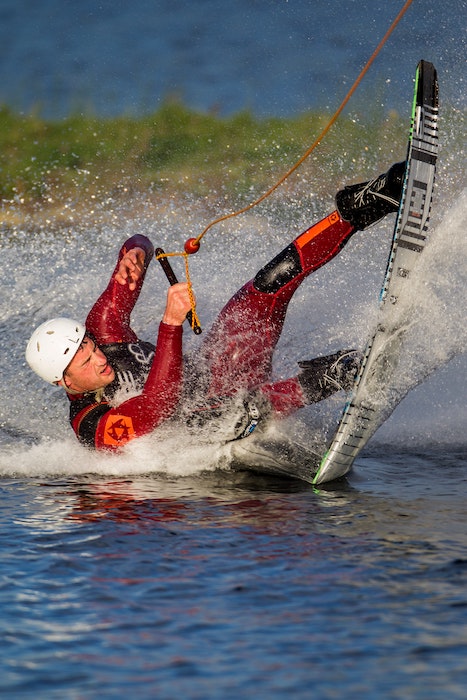
Shutter Speed
If your shutter speed is too slow, you might end up with a blurred shot. This would be no good for the back pages of a newspaper or an online news feed! That means you need a maximum shutter speed of at least 1/4000 s—perhaps more.
A related problem is “rolling shutter effect.” This can be a problem with electronic shutters.
It takes time to read a sensor line-by-line. And that can lead to distortion of fast-moving subjects. For example, a golf club might look twisted at the point of impact… which just looks weird!
Frame Rate and Buffer
If your frame rate is too low, you get fewer chances to capture the “decisive moment.” And you, of course, get fewer shots you can sell.
Fast-moving players and athletes can move a long way in a fraction of a second. That means you must capture as many positions as possible to show every aspect of the action.
Picture editors will make the final decision. But you need to give them the best choice of shots. That might be the quarterback throwing the pass, the wide receiver catching it, or the same player entering the endzone.
If your buffer size is too small, your camera will start slowing down. And it might stop taking pictures altogether!
That’s the worst possible outcome for a sports photographer! If you’re at a sports event to take pictures, you won’t get paid to wait for your buffer to clear.
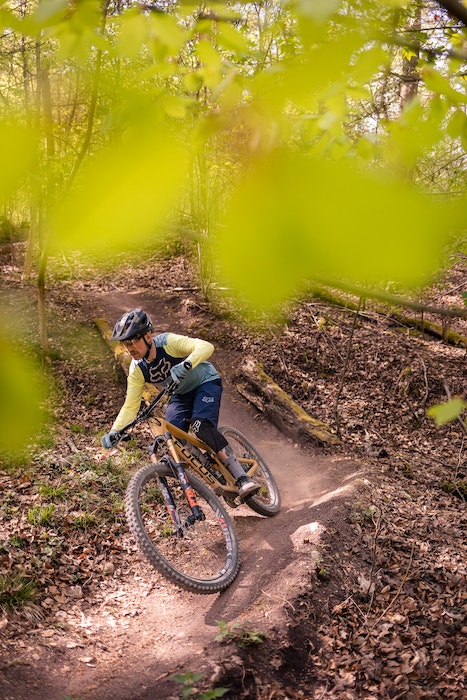
Autofocus
Another important feature you’re looking for is a fast and efficient autofocus system. It needs to lock on quickly and offer accurate subject tracking. Picture editors are looking for tack-sharp images of the action. They’ll reject anything with too soft a focus.
It’s also worth pointing out that if you’re trying to sell to the national press, you won’t have the option of doing much retouching to the images. Sports photography is a kind of photojournalism. So sports photographers can’t just edit out a player who gets in the way!
Sensor Size
But what about sensor size? Don’t you need to have a high image resolution to get excellent image quality?
Well, it’s nice to be able to crop an image to isolate the main action. And you get more detail from a 50 MP camera than a 20 MP one. However, there’s a trade-off between sensor size on the one hand and dynamic range, buffer limit, and continuous shooting speed on the other.
The greater the number of pixels, the smaller each has to be. So that means they can’t gather as much light. Because a lot of sports photography happens at night or in poorly lit venues, that’s a problem.
The buffer size is a function of the read/write speed of the sensor, the processing engine, and the memory card. More pixels lead to bigger file sizes. So each image takes longer to register.
The frame rate is also affected for the same reason. The longer the camera records one image, the longer it has to wait before it can take the next one.
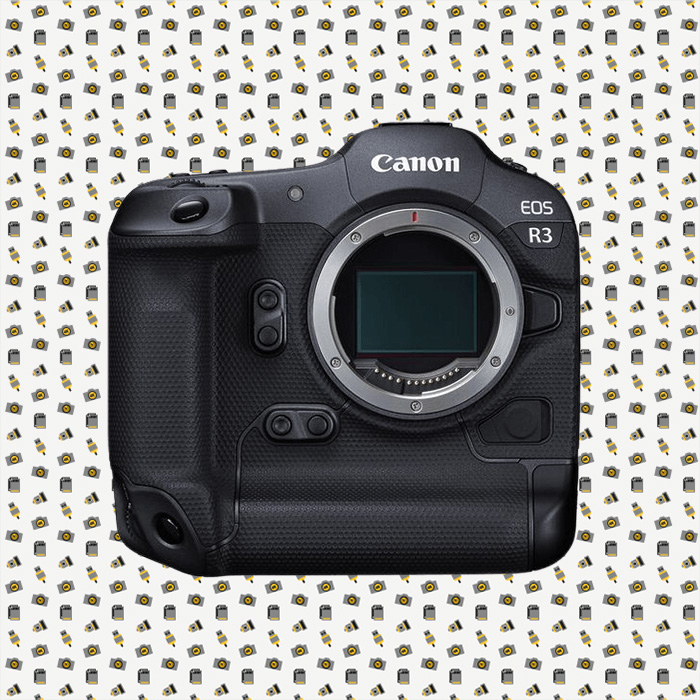
Mirrorless Camera Features for a Sports Camera
So how does all that affect your camera buying decision? Well, the good news is that mirrorless cameras solve most if not all those problems.
The best mirrorless models have large sensors, fast shutter speeds, high frame rates, big buffers, and eye detection. That means there’s not much of a trade-off left to make!
Mirrorless cameras also have the advantage over DSLRs in that their focus points cover most, if not all, of the frame. That means you’re far more likely able to follow fast-moving action and get the composition you want.
Finally, electronic shutters are often susceptible to rolling shutter effect. However, the much-improved readout speeds of the modern generation of mirrorless cameras make that much less of a problem.
Still undecided? Check out our Canon R7 vs R10 comparison or our new post on the best cameras for skateboarding next!



